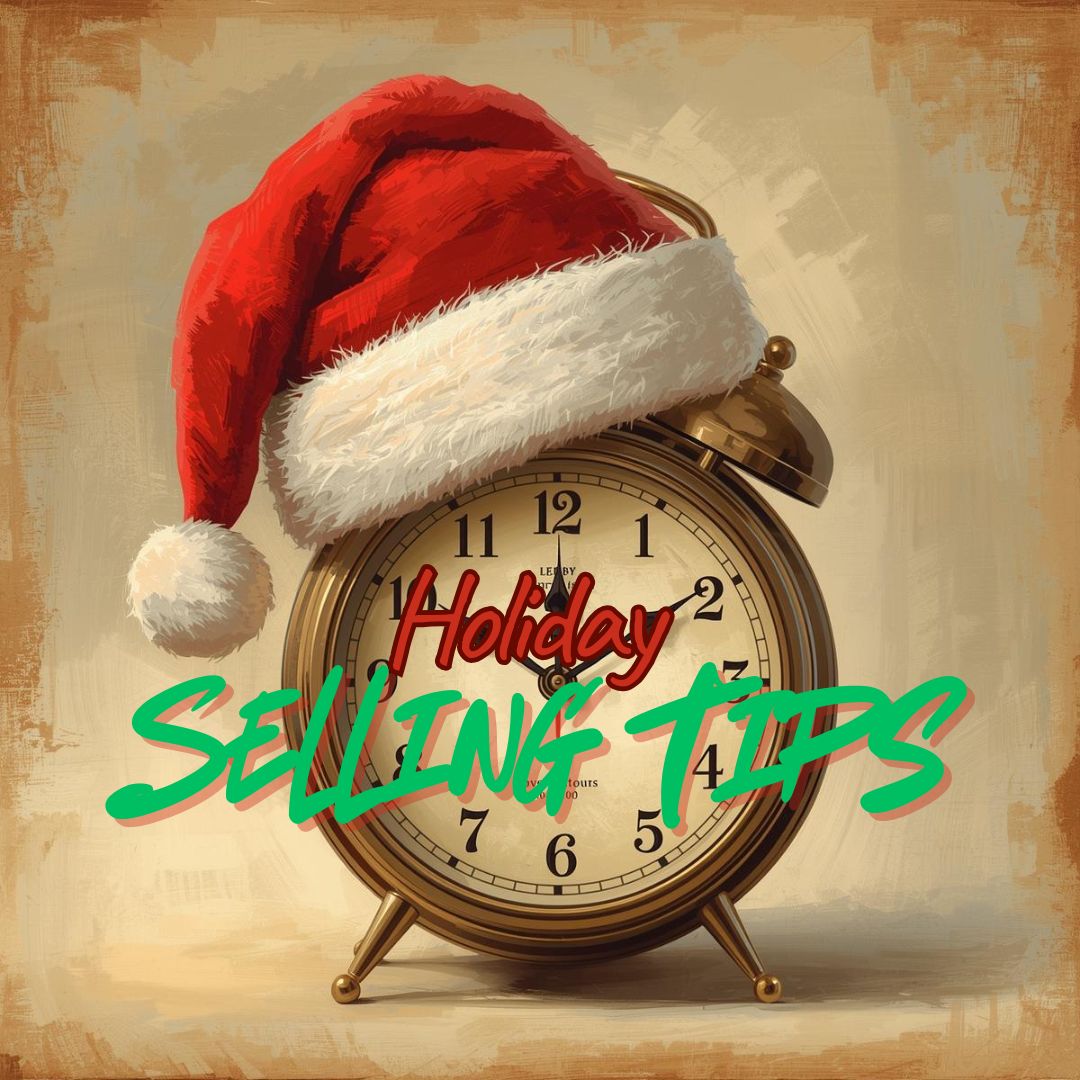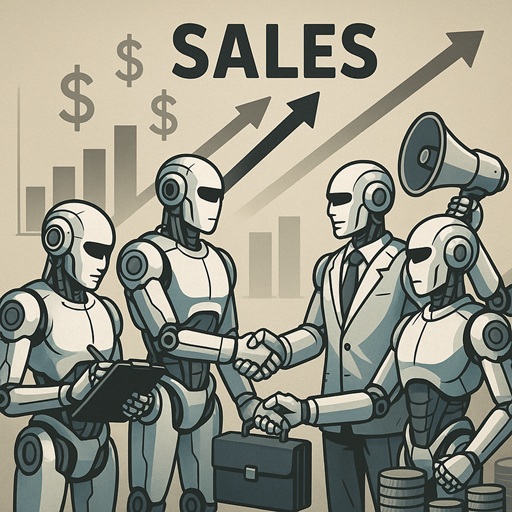📕 Psst…Ready to dive into pharma sales prospecting? Explore our comprehensive directory of the top pharmaceutical companies in the U.S., with all the contact information you need to start building your prospecting lists.
The way drug prices are set in the United States is a huge question mark, at least to the common person. It’s difficult to say who’s at fault for the complex web of the pharma industry– it’s like the Spiderman meme with multiple Spider Men from alternate universes pointing at each other.

If you’re deep in the pharmaceutical industry as a sales executive, you’re probably familiar with the bad reputation that Big Pharma has in America–from jaw-dropping price markups on life-saving drugs to the headache of navigating health insurance coverage for medication.
This bad rep is what makes prospecting in the pharma industry so challenging at times. Doing sales in the pharmaceutical industry requires prospecting wary pharmaceutical clients in a human, empathetic, and diplomatic way–despite the looming cloud of pharma’s negative connotation.
Thankfully, entrepreneurs like Mark Cuban (billionaire entrepreneur and owner of the Mavericks) are shaking things up in the industry via an online pharmacy called Mark Cuban Cost Plus Drug Company that cuts out the middlemen and buys generic drugs directly from pharmaceutical companies to sell to patients. Here’s what he had to say about his business model:
“I could make a fortune from this. But I won’t. I’ve got enough money. I’d rather f**k up the drug industry in every way possible.”
This is the type of approach that’ll make or break your prospecting strategy in the pharmaceutical industry–empathy and understanding the nuances of the industry.
We’ve created this guide to prospecting in the pharmaceutical industry to help you overcome those pain-staking hurdles of doing sales in this market.
You’ll learn about:
- The different types of companies you can find in the industry
- Key characteristics of high-value pharma prospects
- Actionable strategies to overcome pain points of pharma sales prospecting
…and more. Let’s dive in.
Types of pharmaceutical companies
The world of pharmaceutical sales is a complex ecosystem of interconnected companies, like the interconnected web of universes in the Spiderman multiverse. Regardless of the sector or niche within this market, every types of pharmaceutical company has an impact on one another.
To start prospecting the right companies in this industry, you need to start by getting familiar with the different types of pharmaceutical companies.
Here are some of the most common pharmaceutical companies or organizations that you get to know:
Pharmaceutical manufacturers
Pharmaceutical manufacturing companies are the ones developing the drugs and medications that make the industry go round.
They usually oversee the entire process from researching, developing, and producing the drugs from multinational corporations to smaller specialty firms. Some of the biggest names in this category of pharma companies include Pfizer, Merck, and Johnson & Johnson.
Example of a pharma manufacturing company: You might be familiar with the name Pfizer from back in 2020, when COVID was running rampant and vaccines were a huge point of contention for the general public. Well surprise, Pfizer doesn’t just make vaccines, they’re one of the top pharmaceutical manufacturers out there.
So what are some of the services that pharmaceutical manufacturers need help with?
They need raw materials, high-tech laboratory equipment, advanced software to manage the manufacturing process, and other services that support each stage of drug development and production.
Generic drug manufacturers
There are large pharmaceutical manufacturers and then there are the generic drug manufacturing companies.
The difference between the two is that pharma manufacturers create drugs that are protected by patents, giving them the exclusive rights to sell the drugs for typically at least 20 years.
Generic drug manufacturers reproduce existing name-brand drugs once the patents expire. They don’t develop new drugs but make existing medications more affordable.
If pharmaceutical manufacturers are the inventors who create new drugs we’ve never had before with patents to protect these new innovations, generic drug manufacturers make and sell these innovations at a lower cost after the patents aren’t valid anymore.
Examples of generic drug manufacturing companies: A few big names in this sector of the pharma industry include Teva Pharmaceuticals, Mylan, Sandoz.
Here are some of the sales opportunities within the generic drug manufacturing market:
- Supplying active pharmaceutical ingredients (APIs)
- Manufacturing equipment
- Packaging solutions
Biotechnology firms
Biotechnology firms are companies that use living organisms, such as bacteria, yeast, or cells, to develop new products and technologies. Think of it as combining biology with technology to solve problems and create useful products.
These companies usually focus on innovative treatments like gene therapy and biologics. Some everyday examples of the treatments created by biotechnology firms include insulin for people with diabetes and vaccines to help build immunity to viruses.
Example of a biotech firm: Some of the big names in biotech include Genentech, Amgen, and Biogen. These corporations are known for developing breakthrough innovations for serious and life-threatening diseases like multiple sclerosis or cancer.
The services that biotech firms might look for include offering bioreactors, cell culture media, specialized lab equipment, and research collaboration opportunities.
Contract research organizations (CROs)
Contract Research Organizations (CROs) are companies that help pharmaceutical and biotech firms conduct research and clinical trials.
Think of them as specialized service providers that handle all the behind-the-scenes work needed to test new drugs. This includes everything from:
- Recruiting volunteers for trials
- Managing the study
- Collecting and analyzing data
- Ensuring that the trials comply with regulations
For example, imagine you’re a company trying to create a new cold medicine. You need to test it on people to see if it works and is safe. Instead of doing all the work yourself, you hire a CRO. They find the volunteers, set up the trials, gather the results, and help you present the data to regulators. This way, you can focus on developing your drug while the CRO takes care of the complex research tasks.
Example of CROs: Covance, PAREXEL, and ICON plc.
Some of the services that CROs need help with include data management software, clinical trial supplies, and specialized services that enhance their research capabilities.
Pharmaceutical distributors
These companies purchase medications from manufacturers and distribute them to pharmacies, hospitals, and healthcare providers.
Example Companies: McKesson, AmerisourceBergen, and Cardinal Health
Pharmaceutical distributors need help with services in offering supply chain management software, logistics solutions, and warehouse automation technology.
Retail pharmacies
We’re all familiar with the household pharmacy names Walgreens, CVS, Kroger, Walmart…the list goes on.
Retail pharmacies are the end points in the pharmaceutical supply chain where patients purchase their medications. They can range from large chains to independent pharmacies.
There are quite a few services that retail pharmacies need help with, including:
- Inventory management systems
- Point-of-sale (POS) solutions
- Customer relationship management (CRM) tools
Hospitals and healthcare providers
Hospitals and healthcare providers are some of the big players in the pharmaceutical market. They’re the ones administering medication to patients and hold a lot of purchasing power when it comes to deciding which drugs are necessary and needed in the market.
Examples of hospital or healthcare providers: Mayo Clinic, Cleveland Clinic, and Kaiser Permanente.
This sector of the pharma industry is full of opportunities to sell medical devices, pharmaceuticals, healthcare IT solutions, and patient monitoring systems.
Government and regulatory agencies
Government and regulatory agencies in the pharma industry make sure that the medicines we use are safe and effective. They set the rules for testing new drugs, review the results of these tests, and decide whether a drug can be sold to the public.
Their goal is to protect public health by ensuring that all medications meet strict safety and quality standards.
Example agencies: FDA (Food and Drug Administration), EMA (European Medicines Agency), and CDC (Centers for Disease Control and Prevention).
These governmental agencies need services involved with regulatory compliance software, data analytics tools, and public health solutions.
Nonprofit organizations and NGOs
Nonprofit organizations and NGOs focus on global health initiatives, often providing medications and healthcare services to underserved populations.
Example nonprofit organizations and NGOs in the pharma industry: Doctors Without Borders, Bill & Melinda Gates Foundation, and World Health Organization.
Here's where you can come in with sales opportunities for nonprofit organizations in the pharma industry:
- Affordable medications
- Healthcare technologies
- Support for health initiatives
Key characteristics of high-value pharmaceutical companies
So now you’re familiar with all the different types of prospects and companies in the pharmaceutical industry. But how can you tell which ones are the best prospects for pharma sales?
Here are a few key characteristics you should keep an eye out for when prospecting:
- Large market potential: Pharmaceutical companies that operate across markets, geographic regions, and population sizes. They have the capacity to distribute drugs on a wide scale.
- Strong financial stability: More established pharmaceutical companies or well-funded biotech firms are more likely to afford premium products and services or invest in long-term partnerships.
- Prioritization of research and development: Pharma companies that are always looking for the latest advancements and innovative treatments are the leaders in the industry you should keep an eye on.
- Compliant with pharma regulations: The pharmaceutical industry is highly regulated, from drug approval processes and compliance with highly recognized agencies like the FDA or EMA.
- Diverse portfolio: Pharma companies with a broad range of products are a minefield of multiple avenues for sales and partnerships. They’re also less vulnerable to market fluctuations in any single product line.
💡 And last but not least, make sure to find prospects in the pharma industry who have a strong bias towards having a patient-centric focus and prioritizing patient health outcomes.
While your duty as a sales executive prospecting in this market is to find high-paying accounts, it’s also important to keep in mind that the bottom line goal of this industry is to improve the quality of life and health outcomes of the general public.
It’s a bit of an ethical dilemma when the industry is known to be driven by profit margins and shareholder expectations. But this point of contention also stands true for any industry that’s driven by profit.
The good news is, there are a few things to help you filter out pharma companies committed to patient-centric outcomes:
- Look for strong research and development investments
- Check for patient advocacy and support programs
- Review the company’s drug pipeline and portfolio for diversity
- Look for industry recognition like awards for corporate social responsibility or high ratings from patient advocacy groups
- Analyze public statements and reports like annual reports, press releases, and mission statements
💡 Pro-tip: Don’t have time to do all this research manually? Try Seamless.AI’s prospecting search engine to get access to all this information and more with our Buyer Intent tool.
You can keep a pulse on important topics and current events in the industry that affect your prospects’ likelihood to convert. Make an account for free and we’ll give you 50 credits to get started.
5 Tips for overcoming prospecting bottlenecks in pharma
Prospecting in any industry can be a huge headache. In the pharmaceutical industry, the challenge of prospecting is comparable to waiting for hours at a hospital waiting room, enduring long pharmacy lines just to pick up a prescription, or fretting over the long process of drug approvals.
The list of hurdles in this industry, for both prospecting and the patients themselves, can go on forever.
Tired of hearing about the complexities of pharma? Use these actionable tips below to help you navigate each common bottleneck of prospecting to find your dream pharma customers more efficiently.
Tip #1. Always stay up to date on regulatory changes.
Regulations might be the bane of your existence in this industry. They can slow down the sales process, and navigating regulations can be like trying to get a perfect bullseye in a game of darts.
Imagine your prospect works at a mid-sized hospital network in New York that’s in the process of securing a new oncology drug. Securing the necessary regulatory approvals might take months longer than anticipated, and by the time you get the green light your prospect might have decided to go with another supplier.
The best practice in this scenario is to stay up-to-date on regulatory changes and to build a strong relationship with your regulatory affairs team. This is your guardrail to make sure you're not blindsided by new rules and can provide your prospects with accurate timelines.
Tip #2. Be transparent about pricing.
Price sensitivity is a huge thing in Big Pharma like we’ve mentioned before. Prospects are usually skeptical about pricing due to the nature of high drug prices and other financial aspects of the industry.
Your goal is to make sure your pricing is justified. The key to not coming off as another profit-driven pharma salesperson is to really show the value that you’re delivering with the price tag.
Break down your R&D costs, clinical trials, and the value your drug has compared to cheaper alternatives or brands.
Always make sure to explain why prices are what they are.
Tip #3. Map out all the stakeholders early in the process.
In pharma, there are multiple decision-makers involved–from doctors and procurement teams to hospital administrators or even patients.
Be prepared to deal with many medical boards and procurement teams at large enterprise-level hospital groups or other pharma companies. You’ll need to prep for several rounds of meetings, presentations, and getting the buy-in of all the parties involved to close a deal.
💡 Pro-tip: Use a prospecting tool like Seamless.AI to help you map out all the stakeholders before reaching out. You’ll save hours and days of researching their priorities, current state of the industry, buyer intent signals, and more.
Tip #4. Check-in regularly with your prospects.
The sales cycle in pharma can be notoriously long. From initial contact to final contract, it can take months, if not years. It can sometimes feel like waiting for a new drug to cure cancer.
Patience and persistence are key. Keep your prospects engaged with regular updates, useful content, and periodic check-ins. And with every interaction, make sure to add value in some way, whether it be through customer testimonials, case studies, limited time offers, or extra services.
Always add value in your interactions.
Tip #5. Build your credibility.
Trust might not be a word you’ll usually find synonymous with the Big Pharma industry, but it’s a key driver of your success.
You want to show your prospects that you’re not there just to make a profit off of a deal, but that you’re there to break the stigma of Big Pharma with value-driven solutions to help the prospects’ bottom line: improving patient-centric outcomes.
If you’re dealing with a new client for the first time, break the barriers of distrust and skepticism by sharing real life stories of how your pharmaceutical solutions have helped other clients. Always, always, always backup your stories and claims with data and testimonials.
Our suggestion? Always have testimonials, case studies, and third-party endorsements on-hand ready to share with prospects to show that you’re truly focused on being a partner for your prospects, not someone who’s there to make money off of their work.
Pharma prospecting best practices and tips in a nutshell
TLDR? Here’s a quick rundown of the key takeaways you should consider when prospecting in the pharmaceutical industry:
- Leverage data: Use data to back up your claims. Share clinical trial results, patient outcomes, and cost-benefit analyses to show the value of your products.
- Personalize your approach: Tailor your pitch to each prospect. Understand their unique challenges and show how your solution can specifically address those issues.
- Build relationships: Invest time in building relationships. Attend industry events, follow up regularly, and stay top-of-mind.
- Educate: Educate your prospects about the complexities of drug development and the value it brings. Use simple language and relatable examples to make your points clear.
- Be transparent: Honesty goes a long way. Be upfront about any challenges or limitations and work together to find solutions.
Rather than focusing on how complex and challenging the pharmaceutical industry is, focus on turning these pain points into solutions for your prospects.
🗒️ Want to start prospecting pharma companies smarter, not harder? We’ve created a directory of the top pharmaceutical companies in the US using fresh data updated in real-time using our prospecting AI platform.
Keep a pulse on the pharmaceutical industry with the help of our tools to get through the labyrinth of scientific challenges, pharma regulations, and fluctuating market dynamics.
















